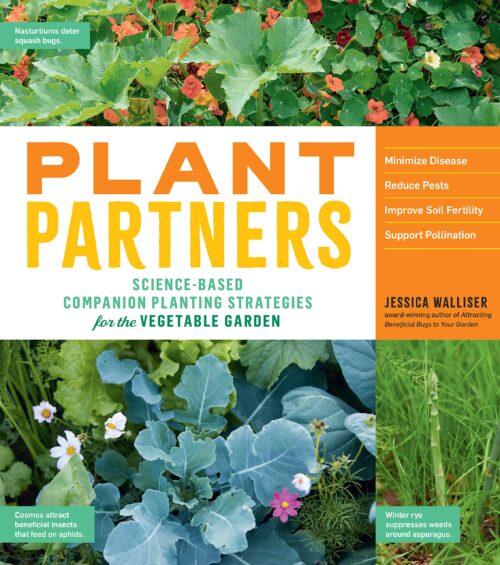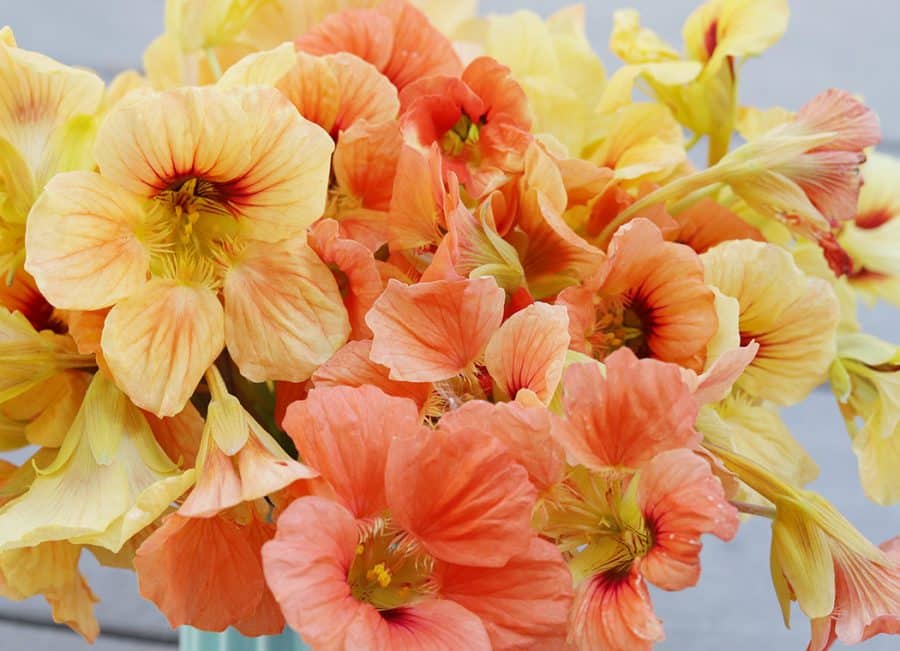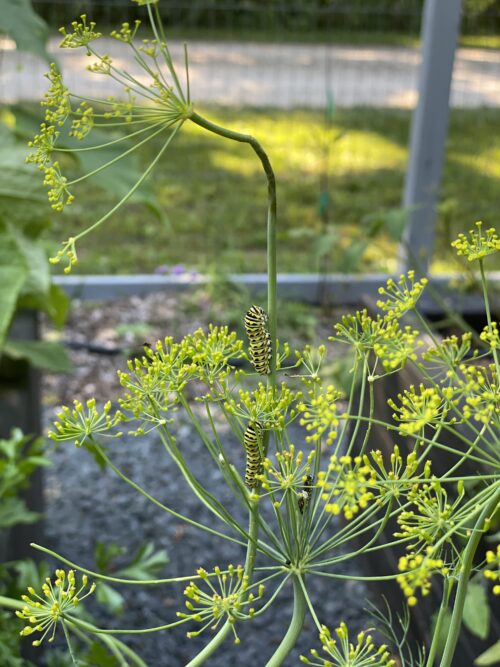Gardeners love a good story and they are particularly drawn to anything that they believe will make their plants happy.
This is where companion planting comes in: gardeners want their plants to have neighbors they love. It makes us feel good. But anthropomorphism aside, a lot of commonly held companion planting theories are a bunch of feel-good nonsense.
Plenty of books have been written about companion planting, but “Plant Partners” by Jessica Walliser is, to my knowledge, the first to rely on science rather than cozy stories. And it has me rethinking how I grow in my vegetable gardens. Walliser relied on studies by universities and agriculture facilities for the book, which looks at the entire garden ecosystem to come up with companion planting pairings.
I may earn a commission from some links.

These relationships have a variety of benefits, from reduced pest, disease and weed pressure to better pollination and fungal associations that can act as a “telephone network” between plants.
The book also debunks some of the most common plant partnerships, some so common that gardeners plant those pairings out of habit. Marigolds have long been hailed as an almost magic plant in the garden and you’ll often see vegetable gardens outlined in marigolds, but Walliser reports that there’s very little science to back up a benefit from marigolds.
They are, however, helpful for warding off onion root maggot flies and cabbage root flies when planted among onions or cabbages. The flies showed reduced egg laying when these plants were grown with marigolds.
When it comes to pests, some of the best plant companions take one for the team. Plants are grown as a catch crop to help protect the main crop. Flea beetles love eggplant, peppers, cole crops and more, but they love radishes and pak choi even more. By interplanting them a couple weeks before the crop you hope to protect, you can help have a great eggplant harvest even if your radishes are infested with flea beetles.
Nasturtium is one of my favorite plants not just for its beauty, but also because it’s extremely easy to direct sow and is edible. It turns out it is also an effective line of defense against squash bugs when it’s grown next to summer squash like zucchini, according to Iowa State University study. And it aids pollination too.
Sometimes plant partners can help attract insect assassins, those so-called good bugs who swoop in to decimate the bad actors.

Dill, fennel and other members of the carrot family get a gold star in this department. It turns out that the bugs that feast on aphids—a true menace in the garden—happen to love the small flowers that make up the flowerhead on these plants. Bring in the good guys for the nectar and they’ll stay for the complimentary aphid buffet. These same plants also attract parasitic wasps that will lay their eggs under the skin of a host insect like the tomato hornworm as well as insects that feed on potato beetles.

If there’s one lesson to be learned from “Plant Partners” it’s that diversity in the garden is crucial. The more varied and colorful our gardens are, the “happier” they’ll be.
[custom_code name=”amazon”]


8 Responses
There is a podcast with this author on the website A Way to Garden (Martha Roach). It’s really good and now I want to read this book.
Really interesting. I’d much prefer plants that bring in good bugs to deal with the bad ones. I don’t like the additional maintenance of insect issues and definitely not any sprays. Even the organic ones- hate anything like that in my routine. I unfortunately love plants that attract Japanese beetles so I hope there is a companion plant for that ?.
Great job Erin I have used marigolds for years and it does work but I do have a separate area for my butterflies I am part of the wildlife habitat also have milkweed for the butterflies that are at trouble.
This is a terrific article. I really like that it focuses on feeding insects that help combat issues in our gardens. This year I’m planting dill and fennel as you suggested and I’m also planting borage from seed. All three are host plants to various butterflies in my area and apparently borage also feeds ladybugs which in turn feed on aphids and mealybugs. I’m hoping to get rid of aphids on my spirea shrubs which seem to be magnets for them.
Great to know about dill. I love new gardening books so I’ll have to add these books to my reading list
Do you let the dill seed? Does it take over if you do? I love the look and have been thinking of growing it for that reason but now you’ve made me see it has other benefits.
I planted dill once and from then on it self sowed. Yes, there were lots of seedlings so I thinned them. I had swallowtail caterpillars every year. I had to make sure I had enough growing so I could harvest dill leaves for me and let the caterpillars have what they needed.
Erin, This a great essay and I appreciate the book recommendation on Plant Partnerships. Another resource for your following is Linda Chalker-Scott’s web page https://puyallup.wsu.edu/lcs/ on plant myths. Dr. Chalker-Scott has degrees in plant biology, horticulture and is an arborist. She teaches at Washington State Univ. I use her web site when I need scientific gardening information. I’m old enough to have been through a lot of gardening misinformation or bunk over the past 30 years. With your credentials of being a Master Gardener I’m glad you’re trying to get science based gardening information to all of us. From new gardener to older, research and plant information changes. The internet is a great place to find information but there are so many writers/bloggers/youtubers who are propagating false information. (pun intended) I read/follow a lot of garden sites and I cringe when they promote outdated, wrong or dangerous information. Certainly it’s important for viewers to do their own research, but many don’t. They rely on the people on the internet as a quick way to get gardening advice. I could go on regarding certain topics here, but I’ll leave it for now. While I’ve got your attention, I liked the collaboration you did with The Middle Sized Garden awhile back.